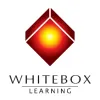
Digital Citizenship Week is October 20–24!
Join teachers worldwide to promote a healthy, positive approach to media and tech.
Take a look inside 5 images
WhiteBox Learning
Pros: Students are able to engage in an authentic engineering process that builds science knowledge.
Cons: Kids may get lost in the heavy text sections.
Bottom Line: Complete learning modules include simple CAD design simulation tools, a digital competition, and options for hands-on building.
WhiteBox Learning works best when woven in with an existing curriculum. It's an engaging solution to the science and engineering performance expectations from the Next Generation Science Standards (NGSS). Middle school teachers who teach integrated science will love the way the KidWind application blends together physical and earth science concepts along with engineering practices. The Teaching Aids section provides details for each application, including a three-week lesson plan.
Wonderful questions are embedded in the Knowledge at Work research section. Unfortunately, they are immediately followed by explanations without giving students a chance to figure it out first. Teachers can use these as driving questions prior to beginning research work for the day. For example, a teacher could project a picture of a wind turbine blade and ask, "Why did the engineer design this blade to be smaller at the tip?" Give the class time to discuss their ideas and then begin their Blade Span and Chord research lesson.
WhiteBox Learning blends digital and hands-on experiences while kids explore STEM applications. Students engage in engineering challenges such as building gliders, wind turbines, or "green" cars within a predetermined set of constraints. Then they engage in an engineering design process as they research, design, analyze, simulate, and build or 3D-print their models. The Teacher Control Center allows teachers to monitor progress and provide feedback throughout the process.
Each challenge begins with a research section to learn the specific content necessary, such as learning about wind before building wind turbines. This is followed by an engineering component, where student adjust design specifications and see the results in a 3D CAD model. Then students submit their model, competing virtually against their classmates or students from around the world to see who gets the best outputs. After modifying their designs, students finally can build their design using traditional modeling materials or print it out using a 3D printer.
WhiteBox Learning stands out because it provides tools for students to actually build and use computer models to test their designs. They use the simple CAD simulation tools to design, test, and improve a model before actually building it. WhiteBox Learning emphasizes the true nature of science engineering; the process isn't linear, giving kids opportunities to move back and forth revising their thinking in light of new tests or evidence.
For each application, students are guided through the engineering design process. Throughout the modules, students take short online background quizzes to check their understanding. Many of the background quizzes require students to analyze the text and graphs provided to answer the questions. For example, students use a slider simulation to determine how blade pitch affects RPM and torque. This is a great opportunity for students to figure out patterns in evidence. Unfortunately, the text prior to the Blade Pitch lesson explains the pattern, giving away the mystery.














